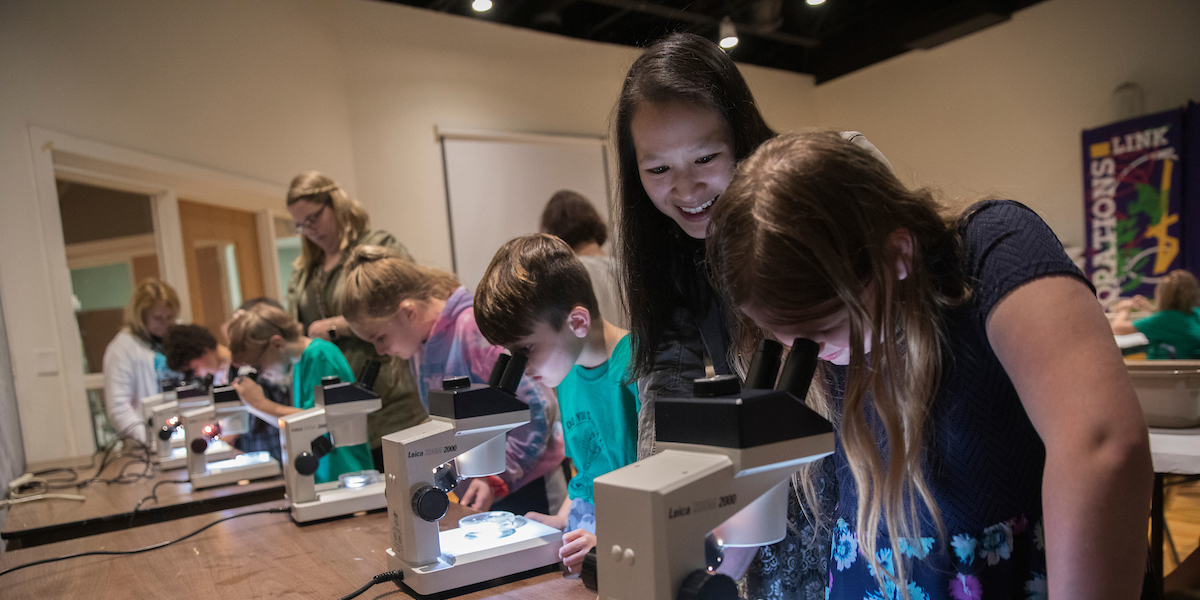Community-engaged teaching and scholarship part of campus fabric
Faculty personnel guidelines reflect value of community-engaged teaching and scholarship

As Binghamton University charts a path to achieving Carnegie Elective Classification for Community Engagement, faculty have been involved every step of the way — but it’s not just about the classification, it’s about the University’s culture.
“The ways the University recognizes and rewards community-engaged teaching and scholarship says a lot about our institutional culture, and at Binghamton, we’re working to build this into the fabric of our identity,” said Kelli Huth, director of the Center for Civic Engagement. “Engagement is embedded in our University mission and strategic plan, and it’s key to our role as a premier public university.”
And to support faculty who are doing such work, Executive Vice President for Academic Affairs and Provost Donald Nieman partnered with Faculty Senate leadership to spearhead efforts to bring community-engaged teaching and scholarship to the fore, including in the promotion and tenure process.
“If we are pushing for institutional change, we have to make sure the faculty know these initiatives are valued,” he said. “In the past, departments have always recognized faculty service as a basic part of faculty recognition in the promotion and tenure process. There are faculty who have always integrated community engagement into their teaching and scholarship and, in a sense, what we are doing is nothing new.
“But what is important is that the promotion and tenure process is transparent and sends a clear message to faculty about expectations and what’s valued,” he added. “We’re actually clarifying this in the promotion and tenure process, and also recognizing the fact that the community-engaged teaching and scholarship that we’ve always done is expanding.
“Since the Road Map set community engagement as one of its strategic priorities, faculty members have become more interested in how their own scholarly work can both benefit from partnerships in the community, but also contribute to the community,” Nieman said.
Nieman and Faculty Senate leadership appointed a faculty committee, co-chaired by Pam Mischen, associate professor of public administration, and Kent Schull, associate professor and chair of history, to look at language around community engagement. After the committee’s recommendation and Faculty Senate approval, the ability to note community-engaged teaching and scholarship was added to faculty annual reports.
“This allows faculty who work hard to develop relationships with different communities to enhance their teaching and scholarship to have that work acknowledged in the promotion and tenure process,” said Nieman. “And what’s emerged through this whole process is that faculty are concerned about the quality of scholarship that their peers are doing, whether it’s basic or engaged, and the quality of the teaching. They understand it can be a very powerful pedagogical tool and expand research opportunities, outcomes and impact.”
One example of such pedagogy comes from Judy Quaranta, associate professor of nursing at Decker College of Nursing and Health Sciences. For her, community-engaged teaching and scholarship has been inherent since 2000, when she became involved with the American Lung Association’s Open Airways for Schools program. “It’s an asthma management program for children with asthma ages 8-11 years,” she said. “We had permission to train our students as part of a grant from New York state to sustain the program.”
To accommodate this project, Decker created an undergraduate nursing elective course.
“We had a lot of independent study students wanting to do research, so we developed the course for the asthma program and we implemented Open Airways in all the schools,” Quaranta said. “We opened it to anybody. It was a nursing elective, but we let non-majors in.”
The course introduced undergraduate students to the research process. Students assist with the IRB process, complete the CITI training, help devise the research design, then implement the intervention, gather the data and assist with data analysis, Quaranta said. “The goal is for the students to participate in manuscript writing with the goal of publication. Several of my undergraduate students are published authors before they graduate.”
In addition to the Open Airways program, Quaranta and Associate Professor of Nursing Rosa Darling are developing a Pediatric Well Being Picture Scale, which is a revision of a tool used for adults. Students have conducted focus groups to revise the pictures and are now in the process of validating the tool in the local community.
“I think it’s really important to get students involved and I want students to be interested in research,” Quaranta said. “I want them to have fun doing research and see it as part of the professional trajectory. I want students to know that they can do research and go on to advanced degrees. It is our hope that they continue to earn PhDs.”
“It takes an extraordinary amount of time and energy to develop community relationships and to integrate engagement activities into teaching and scholarship,” Huth said. “Faculty who choose to do this hard work should not be expected to do it in addition to other more traditional activities. It can be central to their path as academics.”
Quaranta provides one example, but there are still people who don’t know about the changes approved for faculty reports and what it can mean for their departments and disciplines, Huth said, “though we are starting to see conversations at the department level. Some departments are writing promotion and tenure guidelines for the first time and we’re starting to see the trickle-down effect.”
The language included in the personnel guidelines is very broad and will apply to any faculty member in any department, Nieman added. “But departments have their own criteria that are more specific, so this needs to be translated into what is appropriate for a particular discipline.”

